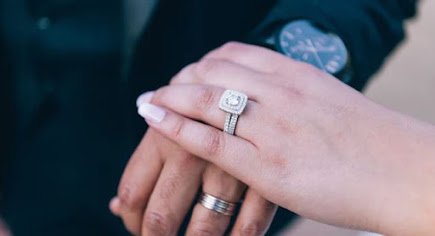Shining Bright: Moissanite vs. Diamond - Exploring the Perfect Gemstone Choice
A diamond is the preferred choice when selecting the perfect gemstone for your engagement ring or other jewelry. However, there is another gemstone with similar properties as diamond, the Moissanite.
It is an attractive alternative to diamonds with remarkable brilliance, sustainability, and affordability.
Here, we will explore the world of moissanite vs diamond, exploring their similarities and differences and helping you make an informed choice for your perfect gemstone.
Composition
Diamonds are naturally occurring gemstones formed deep within the Earth's mantle over billions of years. They are composed of carbon atoms arranged in a crystal lattice structure, giving them exceptional durability and lusterMoissanite vs diamond.
Moissanite, on the other hand, is a laboratory-created gemstone. It is made of silicon carbide and possesses similar optical properties to diamonds, resulting in a high refractive index and exceptional brilliance.
Price Points
One of the significant differences between moissanite vs diamond is their price. Diamonds, especially those with exceptional quality and larger carat weights, are pretty expensive.
On the other hand, moissanite offers a more budget-friendly option without compromising on beauty and sparkle. Due to its lab-created nature, moissanite is more readily available at a fraction of the cost of a diamond of comparable size and quality.
The affordability factor has made moissanite an attractive choice for many who desire a stunning gemstone without breaking the bank.
Visual Appearance
Another essential aspect to consider is the visual appearance of these gemstones. Both moissanite and diamond possess brilliant sparkle and fire, but they have subtle differences in their characteristics.
Moissanite exhibits a different type of brilliance, known as a rainbow effect. The effect is caused by the gemstone's high refractive index, which disperses light into spectral colours.
Diamond has a unique brilliance characterized by white light reflections, often described as a scintillation effect. The choice between these two types of brilliance ultimately comes down to personal preference and your desired aesthetic.
Durability
It is crucial to consider when choosing a gemstone, as jewelry is meant to be worn and enjoyed for a lifetime.
Diamonds are renowned for their hardness, scoring a perfect 10 on the Mohs scale. The hardness ensures their resistance to scratching and everyday wear.
Moissanite, although not as hard as diamonds, still ranks high on the Mohs scale, scoring 9.25. It makes moissanite a highly durable gemstone that can withstand the rigours of daily wear.
Both gemstones are suitable for engagement rings, wedding bands, and other jewelry that require long-lasting beauty.
Ethical and Environmental Considerations
Sustainability and ethics have become increasingly important for many consumers in recent years.
Diamonds have faced scrutiny due to issues surrounding conflict or blood diamonds sourced from regions associated with human rights abuses. However, the diamond industry has taken significant steps to address these concerns and establish ethical sourcing practices.
On the other hand, moissanite is a lab-created gemstone, eliminating any ethical concerns related to its origin. If sustainability and ethical sourcing are a priority for you, moissanite presents a clear advantage in this regard.
Conclusion
The choice between moissanite and diamond ultimately depends on your preferences, budget, and values. Diamonds offer a timeless allure and prestige, while moissanite provides an affordable option with exceptional brilliance and ethical peace of mind. Whether you opt for the traditional brilliance of a diamond or the mesmerizing sparkle of moissanite, both gemstones can shine bright and captivate the hearts of those who wear them.
If you are on a budget and want a gemstone with good brilliance and fire, then moissanite is the best option. You can visit Moissanites by Livia to view the ultimate selection of the gemstone.


Comments
Post a Comment